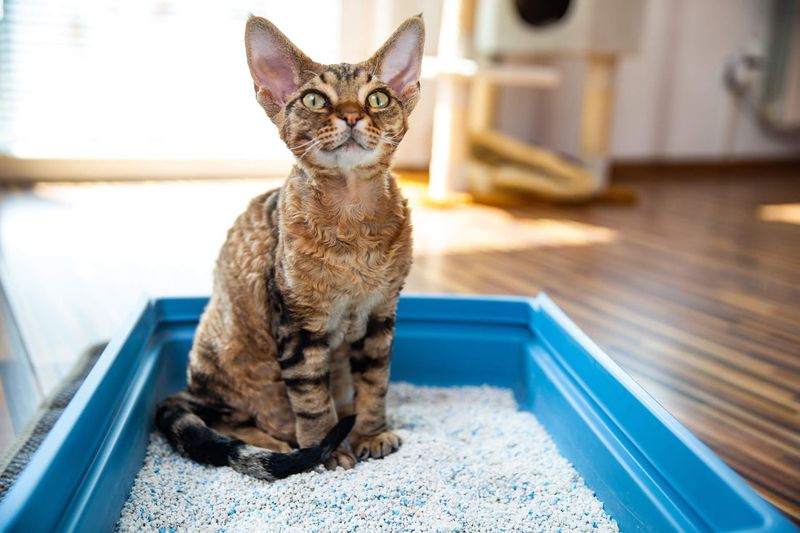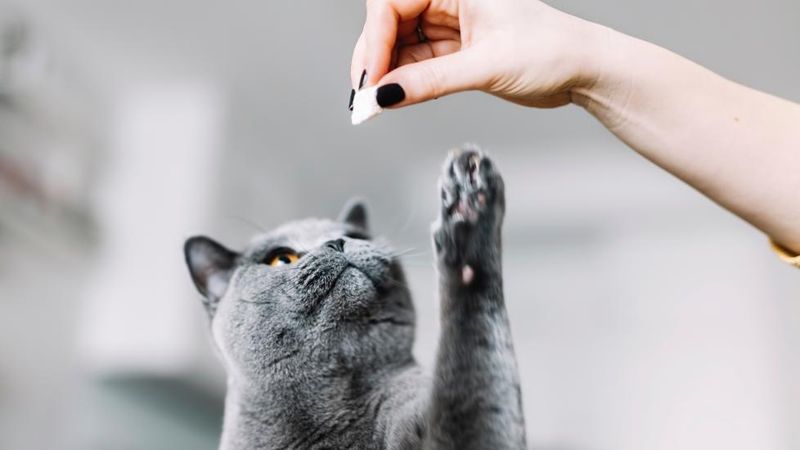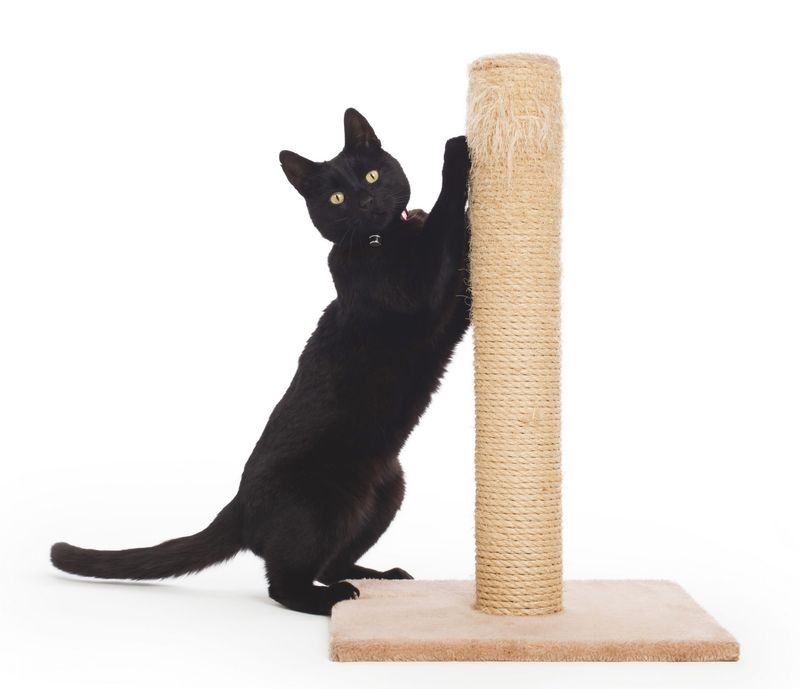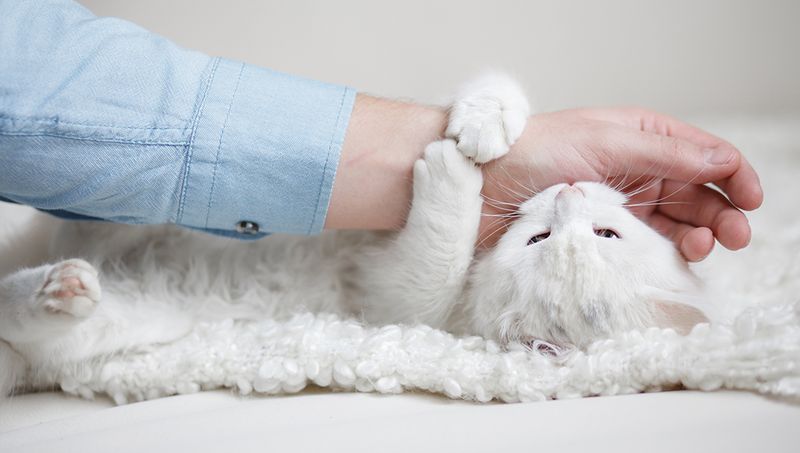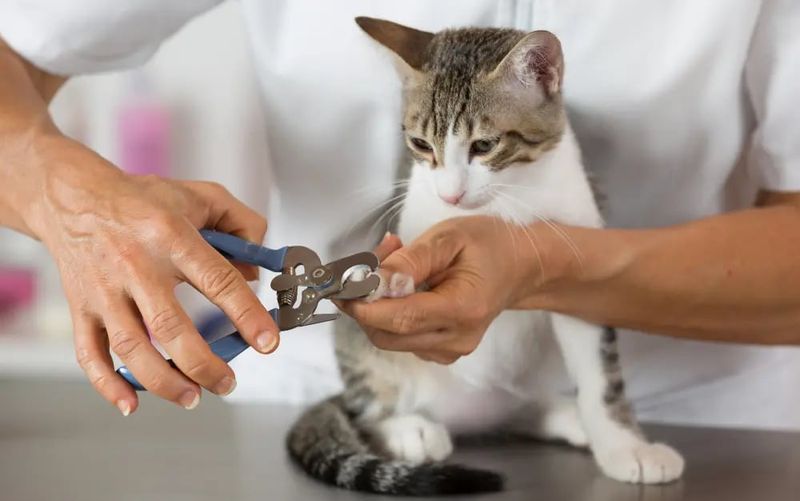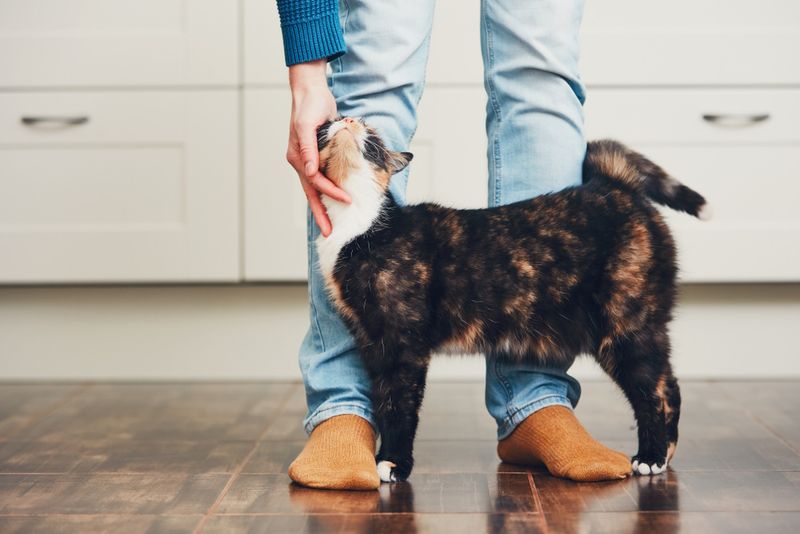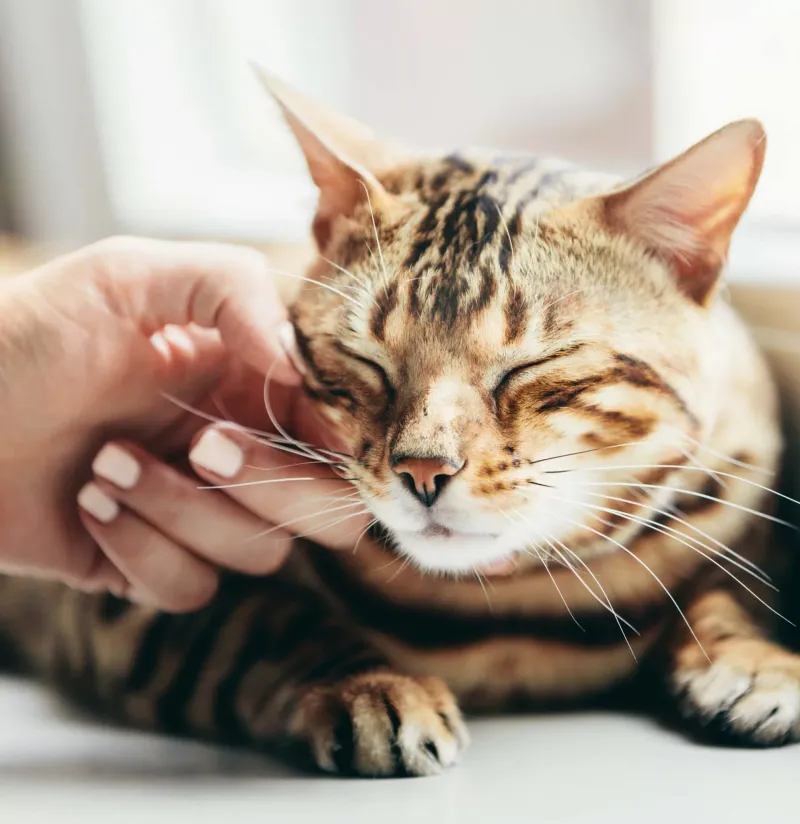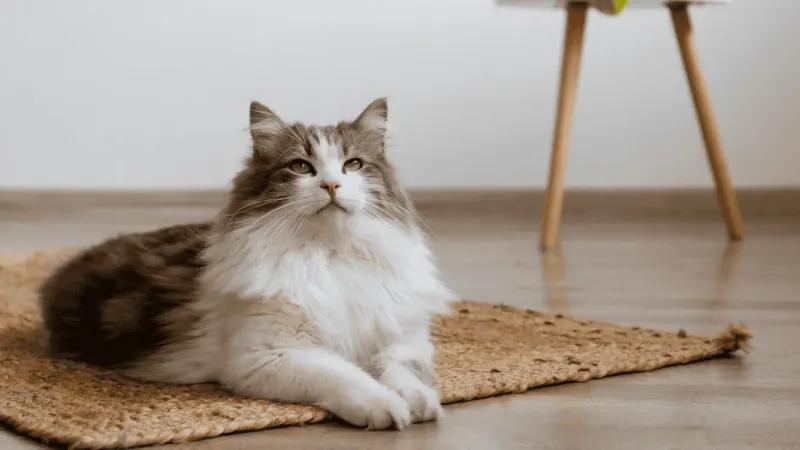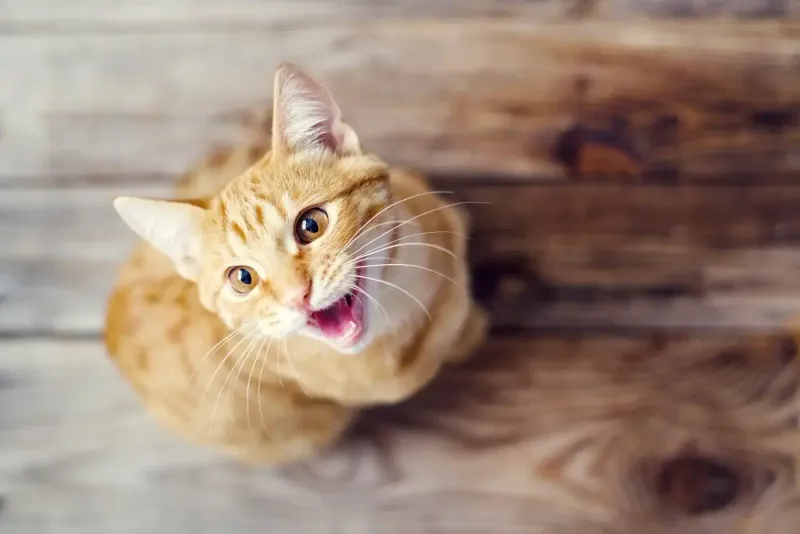📖 Table of Content:
- 1. Using The Litter Box Properly
- 2. Coming When Called
- 3. Scratching On Appropriate Surfaces
- 4. Gentle Play With Humans
- 5. Allowing Handling For Grooming
- 6. Greeting You At The Door
- 7. Signaling Needs Politely
- 8. Relaxed Behavior Around Visitors
- 9. Self-Entertainment With Toys
- 10. Exploring New Environments Confidently
- 11. Excessive Nighttime Activity
- 12. Minor Food Pickiness
- 13. Attention-Seeking Meowing
- 14. Jumping On Counters
- 15. Gentle Love Bites
- 16. Occasional Furniture Scratching
Understanding your feline friend’s behavior is key to building a happy relationship with them. Cats communicate through actions, and knowing which behaviors to encourage and which to overlook can make life easier for both of you. By rewarding positive actions while strategically ignoring problematic ones, you’ll help shape your cat’s behavior without damaging the special bond you share.
1. Using The Litter Box Properly
Proper litter box use deserves enthusiastic praise! When your kitty consistently uses their designated bathroom spot, they’re showing excellent house manners that make your life much easier. Reward this behavior with gentle pets, a favorite treat, or verbal praise immediately after they finish. This positive reinforcement helps cement the connection between the action and the reward. Cats naturally prefer clean spaces for elimination, so maintaining a tidy litter box further encourages this desirable habit. If your previously well-trained cat suddenly avoids the box, it might signal a health issue requiring veterinary attention.
2. Coming When Called
Few cat behaviors demonstrate trust quite like responding to their name. When your feline friend comes trotting over at the sound of your voice, they’re showing remarkable responsiveness that shouldn’t go unnoticed. Make this behavior worth their while by offering a small treat, an engaging play session, or affectionate scratches in their favorite spot. Consistency matters tremendously here – reward every response during training phases. Beyond convenience, this skill could someday protect your cat during emergencies. Start training in quiet environments before gradually adding distractions, and never call your cat for unpleasant experiences like medication or carrier trips.
3. Scratching On Appropriate Surfaces
Scratching isn’t bad behavior – it’s a natural feline need for claw maintenance and territory marking. When your cat chooses their scratching post over your furniture, they deserve genuine appreciation! Sprinkle catnip on approved scratching surfaces or place treats nearby to create positive associations. Many cats enjoy praise during scratching sessions, turning this natural behavior into a bonding opportunity. Different cats prefer different scratching textures and orientations. Some love sisal rope posts, while others prefer cardboard or carpet scratchers. Horizontal, vertical, or angled surfaces appeal to different scratching styles – experiment to discover what your particular kitty loves most.
4. Gentle Play With Humans
Soft paws during playtime show impressive self-control from your naturally predatory pet. When your cat keeps claws sheathed and bites inhibited during interactive play, they’re demonstrating remarkable restraint worth celebrating. Reward this gentleness by continuing the fun play session and offering occasional treats. This positive reinforcement helps your cat understand that controlling their natural hunting instincts leads to more enjoyable human interaction. Kittens particularly benefit from learning gentle play boundaries early. If play becomes too rough, briefly pause the interaction without punishment. This teaches that gentle play continues while rough play ends – a natural consequence they quickly understand.
5. Allowing Handling For Grooming
A cat who tolerates nail trims, brushing, or even the occasional bath is showing remarkable trust. This cooperation makes necessary care routines less stressful for everyone involved. Reward handling tolerance with high-value treats during and after grooming sessions. Keep sessions brief at first, gradually extending time as your cat becomes more comfortable. Speaking softly throughout the process provides additional reassurance. Start handling training with brief, positive experiences during relaxed moments. Touch paws briefly before offering treats, then gradually work toward holding paws and eventually trimming nails. This patient approach builds confidence rather than fear, making future care much easier.
6. Greeting You At The Door
That little furry welcome committee waiting by the door when you arrive home deserves recognition! This social greeting behavior shows genuine attachment and excitement about your return. Acknowledge your cat’s greeting with enthusiastic verbal praise and gentle pets. Many cats appreciate being picked up for a quick cuddle, while others prefer interactive play as their welcome-home reward. Morning greetings often signal hunger alongside affection, making this an excellent opportunity to combine food rewards with social connection. These daily reunion rituals strengthen your bond and reinforce your importance in your cat’s social world – contrary to the myth that cats are completely independent.
7. Signaling Needs Politely
Smart cats develop clear but gentle ways to communicate their needs. Whether softly meowing near an empty food bowl or sitting beside a closed door, these polite signals deserve acknowledgment. Respond to reasonable requests promptly when possible. This reinforces their appropriate communication method rather than forcing them to escalate to more annoying behaviors like knocking items off shelves or excessive vocalization. Pay attention to your cat’s unique communication style. Some use gentle paw taps, specific meows, or even bringing toys to signal different needs. Recognizing and responding to these subtle cues prevents frustration and strengthens your mutual understanding – a cornerstone of a harmonious human-feline relationship.
8. Relaxed Behavior Around Visitors
Cats who remain calm when strangers enter their territory are showing impressive social flexibility. This behavior makes hosting friends and family much more pleasant for everyone involved. Reward social confidence with treats when visitors arrive. Ask guests to respect your cat’s space initially, allowing curiosity to develop naturally without forced interaction. This patient approach builds positive associations with new people. Some naturally shy cats may never become social butterflies, but can still learn that visitors aren’t threatening. Provide elevated retreats where your cat can observe social gatherings from a safe distance. Even modest improvements in social comfort deserve recognition and rewards.
9. Self-Entertainment With Toys
Independent play shows impressive resourcefulness and helps prevent boredom-related behavior problems. When your cat engages with toys during alone time, they’re demonstrating healthy self-sufficiency. Support this behavior by rotating toy selections regularly to maintain novelty. Interactive toys that dispense treats or create unpredictable movements particularly excel at keeping feline minds engaged during your absence. While independent play is valuable, it shouldn’t completely replace interactive sessions with you. The ideal balance includes both self-directed play and daily human-cat play sessions. This combination satisfies both physical exercise needs and the social bonding that strengthens your relationship.
10. Exploring New Environments Confidently
Curious cats who investigate new spaces with confidence rather than fear demonstrate admirable adaptability. This trait makes veterinary visits, travel, and home changes less stressful for everyone. Reward exploratory behavior with treats and praise when introducing your cat to new environments. Allow them to investigate at their own pace without forcing interaction with unfamiliar objects or areas. Early positive exposure to different environments helps develop this confidence. Even indoor cats benefit from occasional supervised outdoor experiences in secure carriers or harnesses. These controlled adventures provide valuable mental stimulation while reinforcing that new experiences lead to positive outcomes.
11. Excessive Nighttime Activity
Those 3 AM zoomies might seem adorable at first, but responding to midnight antics only reinforces the behavior. Cats are naturally crepuscular (most active at dawn and dusk), but can adjust their schedule somewhat to match yours. Instead of reacting with attention when your cat races around or paws at your face during sleeping hours, remain completely neutral. Even negative attention rewards the behavior by breaking the boredom. Proactively address nighttime activity by scheduling intensive play sessions before bedtime to tire your cat naturally. Automated feeders that dispense small meals throughout the night can also redirect energy away from waking you up for early breakfast.
12. Minor Food Pickiness
Cats turning their nose up at perfectly good food often triggers concerned responses from owners. However, catering to every food preference creates increasingly finicky eaters who expect constant menu changes. When your healthy cat refuses their regular food, avoid immediately offering tastier alternatives. Instead, pick up the rejected food after 30 minutes and offer it again at the next scheduled mealtime. Most cats won’t starve themselves if truly hungry. Legitimate food aversions do exist, especially with texture or smell sensitivities. However, constantly switching foods to please momentary whims creates a pattern of manipulation. Consult your veterinarian if food refusal persists beyond 24 hours or is accompanied by other symptoms.
13. Attention-Seeking Meowing
Excessive vocalization often develops when cats learn that loud meowing successfully captures human attention. That persistent yowling for non-essential demands represents a learned behavior rather than genuine need. Break this cycle by completely ignoring meowing that’s purely attention-seeking. Reward quiet moments with attention, treats, or play instead. This teaches your cat that silence, not noise, earns the desired response. Distinguish between manipulation and legitimate communication. Meows indicating hunger at appropriate meal times, requests to go outside for bathroom needs, or signs of potential health issues should receive appropriate responses. Sudden increases in vocalization in previously quiet cats warrant veterinary evaluation to rule out medical causes.
14. Jumping On Counters
Counter-surfing cats are following natural instincts to seek elevated vantage points and investigate interesting smells. While understandable, this behavior creates hygiene concerns in food preparation areas. Instead of scolding (which often happens too late to create a useful association), focus on making counters less appealing while providing attractive alternatives. Double-sided tape, aluminum foil, or specialized deterrent mats create unpleasant textures cats prefer to avoid. Simultaneously, provide appealing elevated alternatives like cat trees or window perches positioned to offer similar views. Reward use of these appropriate climbing spots with treats and attention, creating positive associations with the allowed climbing zones while counters become consistently unrewarding.
15. Gentle Love Bites
Those small nips during petting sessions often confuse cat owners. These gentle love bites typically signal overstimulation rather than aggression, indicating your cat has reached their petting tolerance threshold. Reacting dramatically to love bites creates confusion since your cat is simply communicating a boundary. Instead, calmly end the petting session without punishment or reward. This neutral response acknowledges their communication without reinforcing biting as an attention-getting strategy. Watch for subtle signs that precede love bites – tail twitching, skin rippling, or ears flattening. Stopping petting at these early warning signals helps your cat learn that subtle cues will be respected, reducing their need to escalate to nipping.
16. Occasional Furniture Scratching
Finding your cat occasionally testing their claws on the couch corner can trigger immediate reactions. However, rushing over with a spray bottle or loud reprimand actually rewards the behavior with attention, even if negative. Strategic ignoring works better for occasional scratching slip-ups. Instead of creating a scene, quietly note which furniture attracts your cat and place appropriate scratching alternatives directly adjacent to these spots. Cover tempting furniture corners with double-sided tape or protective covers temporarily. Redirect to proper scratching surfaces when catching your cat in the act, but without creating excitement or drama. Consistent positive reinforcement when using appropriate scratching posts gradually establishes preferred scratching habits without the relationship damage caused by punishment.

